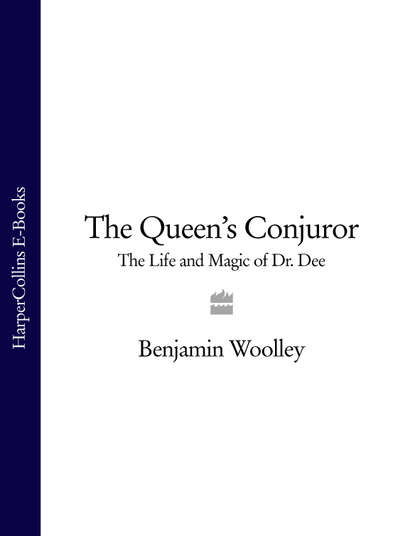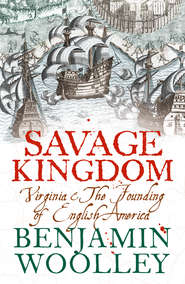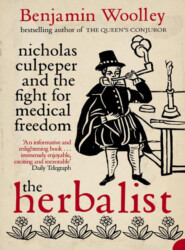По всем вопросам обращайтесь на: info@litportal.ru
(©) 2003-2024.
✖
The Queen’s Conjuror: The Life and Magic of Dr. Dee
Настройки чтения
Размер шрифта
Высота строк
Поля
(#litres_trial_promo) He was labouring away on a series of globes and maps that incorporated the discoveries made by Columbus and his successors in the New World. Dee became fascinated by Mercator’s painstaking work, watching over his shoulder as a picture of the world emerged that to sixteenth-century eyes would have been just as startling and significant as the first photographs of Earth taken from space were in the twentieth. Medieval charts typically depicted the world as a disk or semicircle comprising three continents divided by the Mediterranean, Asia at the top, Europe to the left, Africa to the right and Jerusalem in the centre.
(#litres_trial_promo) They also often showed religious features, such as the Garden of Eden and the Tower of Babel.
(#litres_trial_promo) Mercator’s maps, in contrast, were starkly geographical, showing a world made up of four continents, its curved surface ‘projected’ onto a rectangular map using a mathematical method that enabled accurate navigation.
It was in the midst of these Measurers of Louvain that Dee’s ‘whole system of philosophising in the foreign manner laid down its first and deepest roots’.
(#litres_trial_promo) He and the thirty-six-year-old Mercator became inseparable. ‘It was the custom of our mutual friendship and intimacy that, during three whole years, neither of us willingly lacked the other’s presence for as much as three whole days,’ he reminisced years later. As a mark of his respect and affection, Mercator gave Dee a pair of his globes, one of the earth, the other of the heavens, objects of huge financial and scientific value. In return Dee later dedicated his astronomical work, Propaedeumata Aphoristica (1558), to Mercator.
At Louvain, Dee also practised his skill using such instruments as the cross-staff, perhaps during surveying expeditions guided by Frisius and Mercator, stealing off into the dangerous hinterland of cosmological speculation. Only a few years before Dee’s arrival, news of Copernicus’ heretical theory about the sun rather than the earth being at the centre of the universe had started to seep out of Germany. It was first described in an account by George Rheticius (which Dee owned, though it is unclear when he bought it),
(#litres_trial_promo) and later published in full in 1543 in Copernicus’ own De Revolutionibus. Whether or not Dee and Mercator were discussing Copernicus’ ideas at this point is uncertain but they were experimenting with new models of the universe. Mercator even made one from brass, especially for Dee. Dee called it a ‘theorick’. At first glance the theorick might have appeared to reflect the orthodox view of the universe, comprising a series of concentric rings made of brass representing the spheres thought to carry the planets and stars. But Dee mentions it having rings for the ninth and tenth spheres.
(#litres_trial_promo) According to the standard view of the universe, there were eight spheres: seven carrying the planets (the Moon, Mercury, Venus, the Sun, Mars, Jupiter, Saturn), and an outer shell carrying the stars. Ptolemy also proposed a ninth sphere, the primum mobile or divine force that drove the cosmic system. Mercator’s ‘theorick’ had ten rings, which at least suggests that it was unconventional, though in what way is impossible to know, as the device, like Mercator’s globes, was later stolen from Dee’s house.
Mercator may have been the most influential but was by no means the only mathematician and cartographer Dee encountered at this time. In 1550, Dee went to Brussels to meet Mathias Haker, musician and mathematician to the Danish court, and then ‘by wagon’ to Antwerp, to see Abraham Ortelius, Mercator’s one-time travelling companion and a fellow cartographer. Dee and Ortelius (who also came from a family of merchants) evidently got on well. Some time later Dee wrote a fulsome entry for Ortelius’s ‘Friendship Album’, to which he added his coat of arms (only granted in 1567) and an expression of love for Ortelius, ‘Geographer, Mathematician, Philosopher’.
(#litres_trial_promo)
Another acquaintance at this time was Pedro Nunez, then Lisbon’s leading navigator who became a close friend and an important figure in Dee’s life. When struck down by serious illness in the late 1550s, Dee appointed Nunez his literary executor.
Dee generally had little to do with his fellow countrymen while abroad. The exception was Sir William Pickering, the English ambassador to Charles V’s court at Brussels. On 7 December 1549 Dee began to ‘eat at the house’ of Pickering, as he put it in his diary. He also became his host’s tutor, training him in the arts that would help Pickering establish a position in the ferociously competitive court of Europe’s most powerful ruler: ‘logic, rhetoric, arithmetic, in the use of the astronomer’s staff, the use of the astronomer’s ring, the astrolabe, in the use of both [i.e. terrestrial and celestial] Globes, &c.’
(#litres_trial_promo)
Pickering had, like Dee, studied under Sir John Cheke at Cambridge, who presumably provided the connection between the young scholar and the powerful and glamorous diplomat. Pickering was of good family: his father had been Knight Marshal to Henry VIII. Dashing and wealthy, ‘one of the finest gentlemen of this age, for his worth in learning, arts and warfare’, he was to be a future suitor to Queen Elizabeth.
(#litres_trial_promo)
The two men developed a long and fruitful relationship, Pickering occasionally sending Dee books he had managed to pick up from his various foreign postings.
(#litres_trial_promo) He also was to bequeath Dee a strange mirror which, like Pickering himself, would catch the eye of Queen Elizabeth.
Dining at Pickering’s table in Brussels and surveying with Mercator and Frisius in Louvain, Dee must have felt himself at the centre of the intellectual and political firmament, a feeling only confirmed when Charles V offered Dee a position at his court. It was the first of five such offers from ‘Christian Emperors’, and like the others, he turned it down. He never gave a reason for this decision. It may have been anxiety about embracing a Catholicism which would exile him from an increasingly Protestant England. It may have been a combination of loyalty to his homeland and the hope that its sovereign would one day make the same offer.
By 1551, the whole Continent seemed to lie at young Dee’s feet. On 20 July, after five days’ travel, he arrived in Paris, where, ‘within a few days after (at the request of some English gentlemen, made unto me to do somewhat there for the honour of my country) I did undertake to read freely and publicly Euclid’s Elements Geometrical… a thing never done publicly in any University of Christendom.’
(#litres_trial_promo)
According to Dee, the lectures were a great success. Even though just twenty-four and unknown, he later boasted that he had packed out the ‘mathematical schools’, forcing latecomers to lean in through the windows. He left no record of what had attracted such numbers, but whatever it was, it apparently caused a sensation. ‘A greater wonder arose among the beholders, than of my Aristophanes Scarabeus [the dung beetle] mounting up to the top of Trinity Hall in Cambridge,’ he later wrote.
(#litres_trial_promo)
More offers of royal patronage and jobs flowed in, as did invitations from learned scholars. Once again, Dee turned the work down. But he did exploit the chance to meet as many other mathematicians as possible and to start building up his book collection. One particularly precious item that came into his hands at this time was a manuscript copy of Ptolemy’s Tetrabiblios, the standard ancient work on astrology and astronomy, which came from the library of the French king.
(#litres_trial_promo)
After his triumphs in Paris, Dee returned to a very different England. The throne was no longer overflowing with the dominating bulk of Henry, whose reign had ended in religious and political inertia. Perched upon it now was Henry’s nine-year-old son Edward VI, his feet not yet reaching the floor. Edward’s succession in January 1547 had released a surge of pent-up Protestant fervour. ‘Everywhere statues were destroyed in the churches,’ Dee noted in his diary.
(#litres_trial_promo) ‘The great crucifix… on the altar of St Paul’s was a few days ago cast down by force of instruments, several men being wounded in the process and one killed,’ and an alarmed Spanish ambassador reported. ‘There is not a single crucifix now remaining in the other churches.’
(#litres_trial_promo)
The impulses of the reformers were not, however, purely destructive. A progressive academic mood, receptive to the ideas Dee had encountered in Louvain, swept through the court, promoted by Roger Ascham, now Edward’s Latin secretary, and John Cheke, Edward’s former tutor and now his close aide. Although Cheke professed he did not have a ‘mathematical head’, he showed ‘great affection’ towards mathematicians. Dee was evidently among them, as Cheke personally supervised his introduction to the upper reaches of the new Edwardian court. Among those Dee met was Cheke’s son-in-law, William Cecil, who was to become the foremost statesman of the Elizabethan era. Even this early in his career, Cecil was well established and it was he who presented Dee to Edward VI.
Dee proudly pressed into the King’s hands two astronomical works he had written at Louvain. Both clearly showed Mercator’s and Frisius’s influence, one being on celestial globes, the other on the sizes and distances of heavenly bodies.
(#litres_trial_promo) Neither work has survived (like much of Dee’s prolific output), though their very titles indicate that he was now hoping to establish himself as a British Mercator.
Dee could hardly expect the boy king to understand his works but the books’ dedication to Edward was certainly appreciated, and Dee was duly rewarded with a pension of one hundred crowns, which he exchanged in March 1553 for income from the rectory of Upton-upon-Severn. This produced eighty pounds a year, a modest but certainly comfortable sum for an ambitious young man with expectations of a large inheritance.
His situation improved even further when, on 28 February 1552, he was invited to enter the service of William Herbert, Earl of Pembroke.
(#litres_trial_promo) Herbert was then at the height of his powers; the wily broker who had sided with John Dudley, Earl of Warwick, in the scramble for political domination during Edward’s minority. Dee was probably retained as tutor to William’s sons.
It is hard to imagine how Dee got on in the household. The Earl of Pembroke was no Pickering. He was wild, ‘a mad… fighting fellow’, according to Aubrey.
(#litres_trial_promo) It was said that he could neither read nor write, and used a stamp to sign his name.
(#litres_trial_promo) His idea of good company was not a learned tutor or refined diplomat but his beloved ‘cur-dog’.
Despite their obvious differences, Pembroke evidently came to trust his in-house scholar, asking him to cast horoscopes for various members of his family, including his second wife.
(#litres_trial_promo) He may also have recommended Dee to John Dudley who, since his seizure of power from Edward’s Protector, the Earl of Somerset, had promoted himself to Lord President of the Council and Duke of Northumberland.
(#litres_trial_promo)
Dee joined Northumberland’s household in late 1552, possibly as an advisor to the Duke himself or again as tutor to his sons.
(#litres_trial_promo) Dee would have been a safe choice for either role, with impressive testimonials from well-known Protestant humanists such as John Cheke and Roger Ascham.
Dee was now established as an intellectual of some standing. He was ‘astronomus peritissimus’, an expert astronomer, as John Bale put it in his Index of British and Other Writers, published in the 1550s.
(#litres_trial_promo) At the heart of the new Protestant order, he was poised to become a favourite of the King, and seemed destined to enjoy rank and wealth.
Then fortune intervened. The heavens turned hostile and, for Dee, as for Hamlet, all occasions did inform against him.
IV (#ulink_d09981e8-d121-54e9-bed9-0d6b68f7201a)
On the afternoon of 6 July 1553, a terrible storm broke over Greenwich as King Edward lay close to death. He had fallen ill the year before, and the Duke of Northumberland, possibly on Dee’s advice, had called in the Italian physician and astrologer Girolamo Cardano to treat the ailing King.
(#litres_trial_promo) Before seeing his royal patient, Cardano cast Edward’s horoscope, and discovered ‘omens of great calamity’. A physical examination followed which only confirmed the prediction: Edward was found to be suffering from consumption. Cardano was summoned to the Council to give his opinion. He did not report his grim astrological findings, as drawing up the horoscope of a monarch was potentially illegal, a form of spying through magical surveillance. All he said was that the King needed rest.
By the end of 1552, Edward was coughing up blood. He was prescribed opiates and other remedies, some quite elaborate, such as a mixture of spearmint syrup, red fennel, liverwort, turnip, dates, raisins, mace, celery and the raw meat of a nine-day-old sow, nine spoonfuls to be taken as required. To counter the rumours that the King was being poisoned, Northumberland planted the story that Princess Mary, Henry VIII’s only child from his first marriage and in Catholic eyes his only legitimate offspring, had given her half-brother the evil eye, attempting to despatch him by witchcraft. Northumberland rightly feared that if she became queen, England’s great Protestant experiment would be over.
Northumberland persuaded Edward to disinherit Mary in favour of Lady Jane Grey, the Protestant great-granddaughter of Henry VII. To protect his position further, Northumberland then married Lady Jane to his fourth son Guilford, and Jane’s sister Katherine to Pembroke’s son William, Lord Herbert. The joint ceremony was held on Whit Sunday 1553 at Durham House, Northumberland’s London palace overlooking the Thames. It involved the two families that were now acting as Dee’s patrons, and it is likely he attended the event.
Two months later, on that stormy July afternoon, King Edward prepared to meet his maker. With his final breaths, he was said to have whispered a prayer he had composed especially for the occasion, beseeching God to ‘defend this realm from papistry, and maintain Thy true religion, that I and my people may praise Thy holy Name, for Thy Son Jesus Christ’s sake, Amen.’







